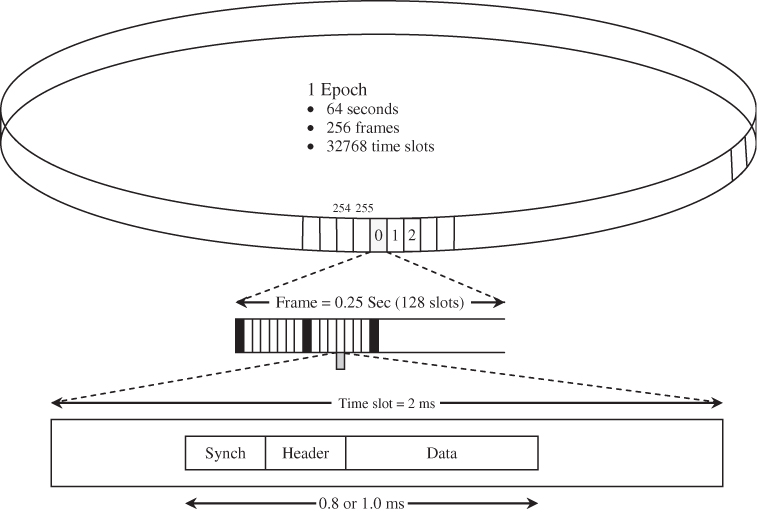5.3 EPLRS Waveform
The EPLRS waveform is a high security anti-jamming radio set that provides user-to-user data communications. A single EPLRS net can be reconfigured as a local area network (LAN), wide area network (WAN), or range extension to provide a greater area of coverage in the war theater. Configurations rely on an NCS which allocates the resources according to the commander's need. Multiple interfaces adorn the radio, allowing capabilities such as voice communications, data communications, and position location reporting.
While Link-16 met the airborne platforms' most urgent needs for communications capability between high-speed nodes, EPLRS satisfied the needs of the ground forces through building hierarchal nets and supporting situational awareness requirements.
The underlying communications capability of this radio relies on TDMA architecture as shown in Figure 5.10. In this figure, a TDMA epoch of 64 seconds (shown in the ring) is divided into 256 frames, each frame being 0.25 seconds. Each frame is then divided into 128 slots (each group of eight slots forms a logical timeslot), each of which is approximately 2 ms. Transmission takes 800–1000 µs; the remaining time is needed for processing overhead and message validation.
Figure 5.10 TDMA structure of the EPLRS waveform.

A major update to EPLRS radios was the development of the Internet controller (INC), an IP gateway ...
Get Tactical Wireless Communications and Networks: Design Concepts and Challenges now with the O’Reilly learning platform.
O’Reilly members experience books, live events, courses curated by job role, and more from O’Reilly and nearly 200 top publishers.

